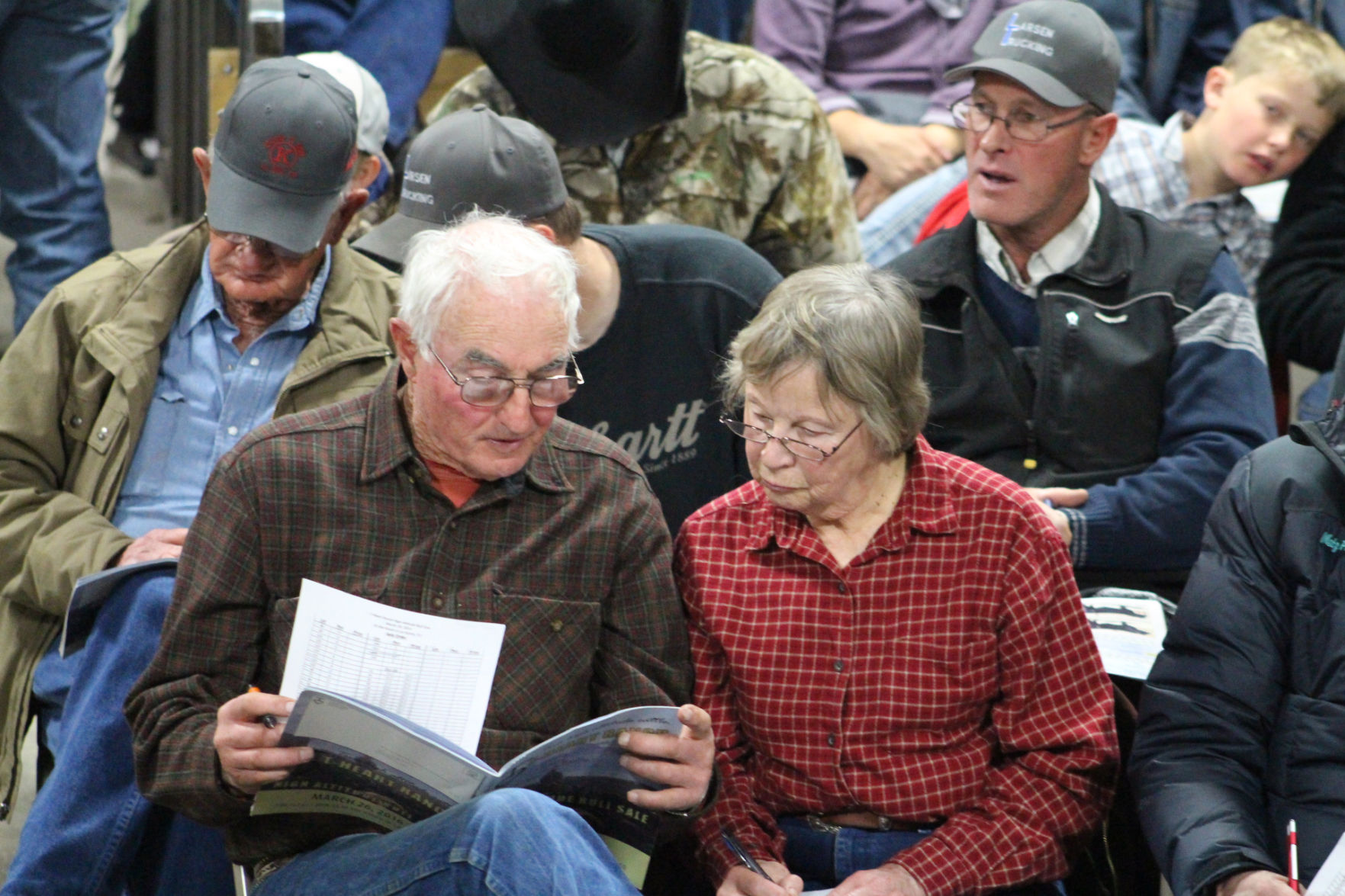Reeves and Betsy Brown of Beulah, Colorado, were hit particularly hard by the drought conditions that plagued southern Colorado in past years. In 2000, they cut their Angus cow herd to below 500 cows. With fewer cows and few diminishing expenses, Betsy Brown said they decided it “was high time to try a little hybrid vigor.”
The Browns chose the Simmental breed mainly because of the wild weather swings in their area. Last spring was their first SimAngus calf crop and the weather was as challenging as it could have been.
“We needed vigor,” she said. “We had 56 inches of snow during calving and we’re pleased. We got what we were looking for.”
Many calving seasons prior to the addition of the Simmental genetics were marked by pastures so muddy they were unable to reach all of the cattle during a time when it is crucial to do so. While one year doesn’t stand out to Reeves, she said calving in difficult weather conditions can be horrible.
“It’s a blur of fatigue and disappointment,” she said. “I feel we’re so much better off with the hybrid calves than we would have been with straight bred calves under those conditions.”
The Browns bought their 3R Ranch in 1981 but the ranch itself had been in operation since 1886. The Browns are unlike many multigenerational operations. Operating as a couple, she said can be an advantage when it’s time to make management decisions. With 11,000 deeded acres, the couple doesn’t face the challenges that often accompany forest permit grazing and leased ground, something she said is a blessing in the West.
Both originally from Texas, the Browns first owned a stock farm near Austin, Texas, but Colorado kept calling to them. For Reeves, it was the call of the West and cattle country and Betsy had spent many of her formative years at the foot of the Rockies. When they were presented with an opportunity to sell their Texas property, they did and formulated a list of requirements for a Colorado ranch.
“We looked from the Canadian border to the Mexican border in the Rocky Mountain states,” she said. “We found this ranch and it met all the criteria we had written down.”
The price, higher than they anticipated, was a factor to work around. As so many in the industry do, the Browns said they “floundered with debt for several years and eventually made it through.”
Hailing from south Texas, the first winters were a difficult adjustment for Reeves, especially.
“He wasn’t sure he was going to manage back in 1981,” she said.
The Browns depended for many years upon the leasing of a single School section. Their ranch ground surrounded the section on all sides, but Brown said they were afraid for years that it would be sold for development, leaving them scrambling to manage around the challenges of sprawl. The Browns were able to purchase the section several years ago, much to their relief.
Marketing is another aspect the Browns have tackled from a less traditional angle.
“In 1997, we purchased units in U.S. Premium Beef,” she said. “In November, we send the calves to Garden City, Kansas, to Triangle H and he puts them on wheat pasture and then into his feedlot. Then they’re trucked straight to one of the packing houses for USPB.”
This marketing arrangement is one of the things that eventually pointed the Browns in the direction of the Simmental breed. Sam Hand, of Triangle H, has received the Reeves’ calves for about 20 years.
“Sam Hand has used Simmental on his Angus (cows) for years,” she said. “We’re such admirers of his that it got us to thinking in that direction. There just wasn’t another breed that was so complimentary to us.”
In the years since 1981, the Browns have planned and instituted intensive grazing, something she said has upgraded the grass in both quality and quantity. To do so, they have added miles of fence and she said they are content with their progress in the operation. They plan to eventually place the entire property in a conservation easement, ensuring that it will remain in a single unit and be managed and cared for by someone who loves the ranch as much as they do, she said.
Looking back on their years in the business, she encourages young cattlemen to follow through with the business if that is their desire, as nothing else, she said, will satisfy an aspiring cattleman.




